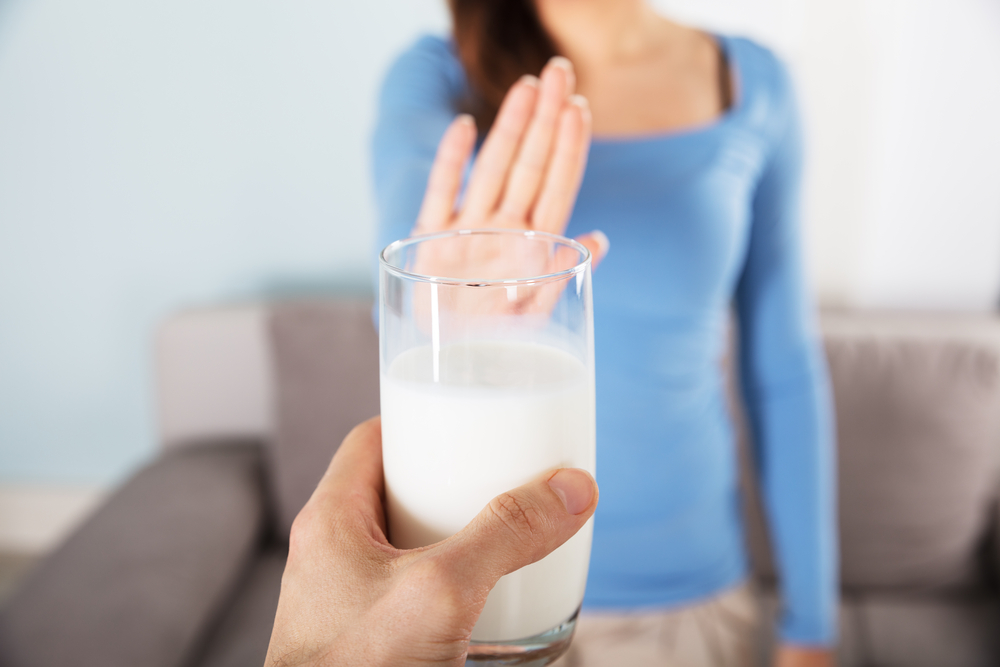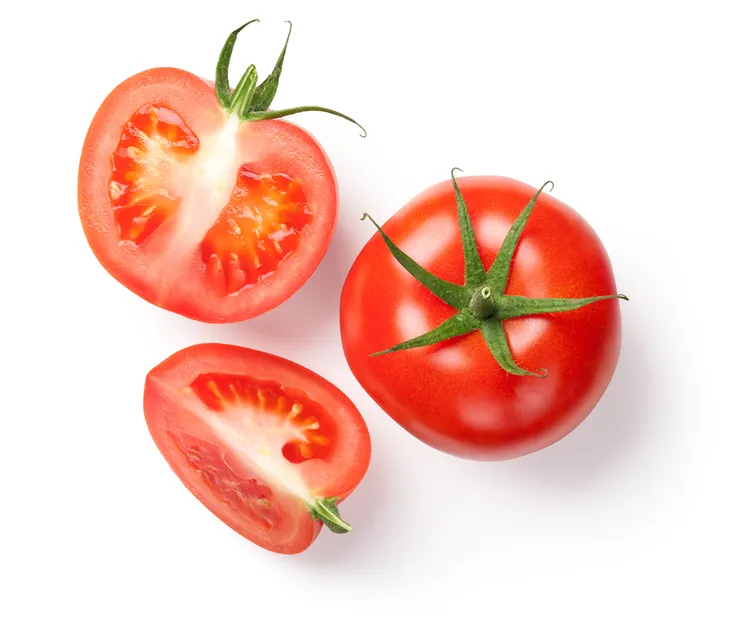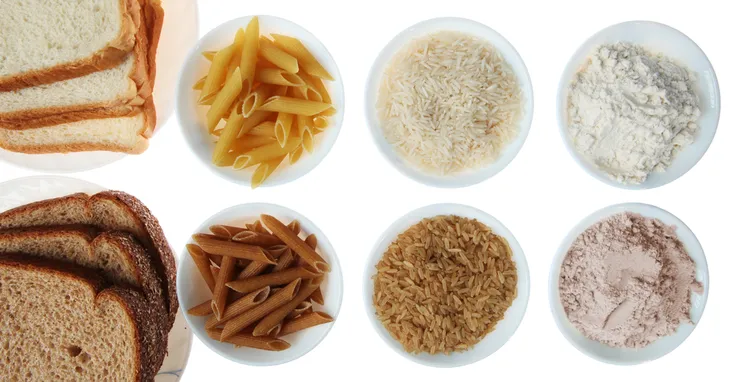Anyone who suffers from any kind of chronic inflammation can relate to the pain and discomfort that comes when joints stiffen and swell. Not only is it uncomfortable, but it makes even the most mundane tasks like picking up a pen or taking a walk, difficult to get through.
Unfortunately, this isn’t all that uncommon. For some people, inflammation is hard to prevent, but there are things we can do to help. Studies have shown that certain foods can have anti-inflammatory effects. These kinds of foods are things like olive oil, nuts, and fatty fish. On the same note, there are foods that can contribute to inflammation in the body. Some of these foods won’t be that surprising as they’re pretty unhealthy already on their own, but others might! Here are some examples of foods that may lead to joint pain…
Want diet & nutrition content delivered straight to your inbox? Sign up for our exclusive diet & nutrition newsletter!
Tomatoes
This one might come as a surprise because tomatoes are usually thought of as anti-inflammatory, but according to Prevention, they can actually make inflammation worse when it comes to one specific type of arthritis called gout. When it comes to gout, tomatoes can trigger joint pain. The source refers to research from a study that surveyed 2,051 people who suffer from gout and found that a whopping 20-percent experienced worse inflammation after eating tomatoes. “They then analyzed data from 12,720 people who did not have gout and found that eating tomatoes increased the levels of uric acid found in their blood,” writes the source.
So what is it about tomatoes that causes joint pain for people with gout? Prevention explains that the foods high uric acid content is the underlying cause. The source also states that people can still eat tomatoes if they have gout, they should just try to cut back and take a uric acid-reducing drug to help relieve the symptoms.
Sunflower, Safflower, Soybean, and Cottonseed Oils
Sunflower, safflower, soybean and cottonseed oil fall into the category of omega-6 fatty acids. You’ve probably heard a lot about omega-3 fatty acids which are really good for us, but the omega-6’s are the opposite — they’re terrible for us! Unfortunately, they exist in a lot of the packaged foods we eat. You’re probably eating a lot more of it than you realize. According to Prevention, the average American is eating 25 times more omega-6 fatty acids than they are omega-3 fatty acids which could be contributing to their joint pain.
Prevention writes that research shows anyone who eats a ratio of more than 10 to 1 are at risk for conditions like asthma, cardiovascular disease, and inflammation. “Researcher suggests anyone with rheumatoid arthritis get their ratio down to 2 or 3 to 1. This actually suppressed inflammation in study participants with the condition,” writes the source. You’re likely to find omega-6 fatty acids in fried foods, eggs yolks, and meats. So Prevention advises cutting down on those types of food.
Sugary Soda
By now most of us know that soda, even diet soda, is bad for us. One of the main reasons soda is so bad for us is because of its sugar content which puts us at risk for diabetes and heart disease. Prevention also points out that consuming this much sugar on a regular basis “can trigger the release of inflammatory ‘messengers’ called cytokines,” according to the American Journal of Clinical Nutrition.
During their research which consisted of two large studies that spanned over 30 years, “they found a link between soda consumption and arthritis risk,” writes Prevention. Women who consumed more soda had a 65-percent greater risk of developing arthritis than those who didn’t. Therefore, to avoid any kind of joint pain in the future, we suggest limiting soda consumption.
Meats
Aside from those who are vegan or vegetarian, we all include meat in our diet either on a daily basis or at least a few times throughout the week. While meat definitely has some benefits (as long as you’re choosing the right kind), it does tend to be higher in fat and calories. This means it’s easily metabolized into chemicals that can cause inflammation, says Reader’s Digest. The source goes on to warn that people can actually make their meat more unhealthy if they grill, sear, or fry it at a high temperature because the charred flavor that comes from this form of cooking is a result of toxins called AGEs (advanced glycation end products) which are harmful to the body.
These AGEs cause harm because when they are broken apart by cytokines, they result in inflammation, explains the source. “We expect that increased levels of AGEs increase inflammation, although a direct link to arthritis is not firmly established,” says Jaime Uribarri, MD, a nephrologist at Mount Sinai Hospital to Reader’s Digest.
Fish
Fish is a great thing to include in our diet because some fish are high in omega-3 fatty acids and they’re a great lean source of protein. Most nutritionists recommend eating 2 to 3 servings of fish every week. However, some species of fish and shellfish can cause gout-related joint pain due to their high levels of purines, says LiveStrong. Be way of fish like herring, mackerel, anchovies, sardines, scallops, and mussels, says Drugs.com. Fish eggs are also a concern due to high-purine category.
LiveStrong also notes that Quickcare.org lists haddock and salmon as a moderately high source of purine.
Dairy
Dairy is one of the commonly known foods to avoid for anyone with arthritis, particularly rheumatoid arthritis. It can cause major flare-ups due to a protein found in dairy, says Reader’s Digest. In fact, some people who suffer from rheumatoid arthritis have an actual intolerance to the proteins found in milk, “their bodies form antibodies to milk proteins, and attack those proteins when they’re found in the body,” writes the source while citing the Physicians Committee for Responsible Medicine. The source does note that not every person with rheumatoid arthritis will react this way to either milk or other types of dairy.
Reader’s Digest refers to a 2015 study on women with osteoarthritis which found that milk was actually able to improve their knee pain, but cheese made it worse. This is a perfect example of how the reaction to different types of dairy can vary. The only way for someone to tell how they will react is to experiment themselves.
Fried Foods
Most people already know to avoid eating lots of fried foods because they are nothing but bad for us. In addition to the most obvious side effect which is weight gain, eating lots of fried foods can also cause inflammation. Reader’s Digest cites a study performed at Mount Sinai School of Medicine which found that those who cut back on eating fried and processed foods were able to reduce the inflammation in their body because “fried foods contain lots of saturated fats, which can worsen inflammation,” writes the source.
The source talked to Lona Sandon, RD, an assistant professor at the University of Texas Southwestern Medical Center in Dallas who suggests people make a few simple swaps in their daily choices to help reduce inflammation. One of the easiest is to replace butter with olive oil — this alone will help make some improvements in any symptoms!
White Flour Based Products
Refined carbohydrates is a great way to lump a bunch of white flour products together including white bread, pasta, rice, crackers, and potatoes. The biggest problem with these foods is that they increase the body’s production of AGEs which leads to inflammation, says the Arthritis Foundation. The molecular structure of these foods is simple but causes lots of complications in the body. “The body turns them into sugar more quickly, and sugar is highly inflammatory,” says Barbara Olendzki, nutrition program director of the Center for Applied Nutrition at the university of Massachusetts Medical School in Worcester to Reader’s Digest.
Whenever possible, the source recommends choosing whole grain products. This goes for all of the foods listed above, including cereal. When it comes to rice and potatoes, consider using brown rice and sweet potatoes which has more nutrients and high fiber content.
Alcohol and Tobacco
There are many other reasons aside from joint pain that should deter a person away from from using tobacco or drinking too much. Both of these products are bad for us in general, but when it comes to joint pain, they continue to make things worse. According to Healthline, smoking tobacco can put a person at risk for rheumatoid arthritis and drinking a lot of alcohol increases their chance of developing gout. Both of these conditions will eventually lead to inflammation and joint pain.
To avoid this, the source recommends not smoking, and instead focusing on a healthy diet with some physical activity. You should also be trying to get lots of rest. All of these things are hard to maintain when using alcohol and tobacco, so it’s best to leave those two out of the picture.
Salt and Preservatives
Just as we’re all probably getting far too much omega-6 fatty acids and sugar in our diet, most people are probably consuming too much salt and preservatives too. A lot of companies will use both of these ingredients in their foods because it allows them to sit on the self a little longer in the grocery store. The downside is that too much salt in a person’s diet can cause joint pain, says Healthline. If you’re experiencing joint pain, a change in diet might help. Try reducing salt intake to a modest amount.
Healthline advises consumers to be better educated about what they are eating and purchasing. Start reading the labels and make a conscious effort to avoid food that is packed with preservatives and additives. “Less salt may help you manage your arthritis, which includes avoiding prepared meals,” writes the source. We know they are much more convenient in the short term, but they definitely not better in the long run for our health!
Coffee
For many people, myself included, giving up coffee or even just cutting back on it is hard to do! For a lot of coffee drinkers, it’s not only about the taste and energized feeling we get afterwards, but it’s also about routine. It’s part of our everyday routine to wake up and enjoy a cup of coffee in the morning. However, coffee has been linked to the development of rheumatoid arthritis (RA) and it’s one of the foods many arthritis sufferers are often advised to avoid. “Researchers believe that some ingredients in coffee trigger rheumatoid factor, which can later progress to RA, although the findings are based on a study of Finnish coffee drinks who drank boiled coffee, which may influence its impact on the body,” writes Reader’s Digest.
Reader’s Digest cites a 2009 study that was published in the journal Arthritis Research and Therapy. This study found that even decaffeinated coffee can contribute to rheumatoid arthritis and that the only real option to avoid any potential risk is to turn to an antioxidant-rich tea instead. The rule of thumb is to drink coffee in moderation, says Julie Ching, registered dietician.
Gluten
Gluten, which is a protein found in wheat and grain products like barley, oats, and rye, can actually cause inflammation, says Reader’s Digest. “People who have celiac disease, an autoimmune disorder in which gluten prompts the body to literally attack certain food proteins and injuring the digestive tract should go 100 percent gluten-free, as should arthritis patients who have gluten intolerance, a less serious condition that can still trigger inflammation and other symptoms,” writes the source.















